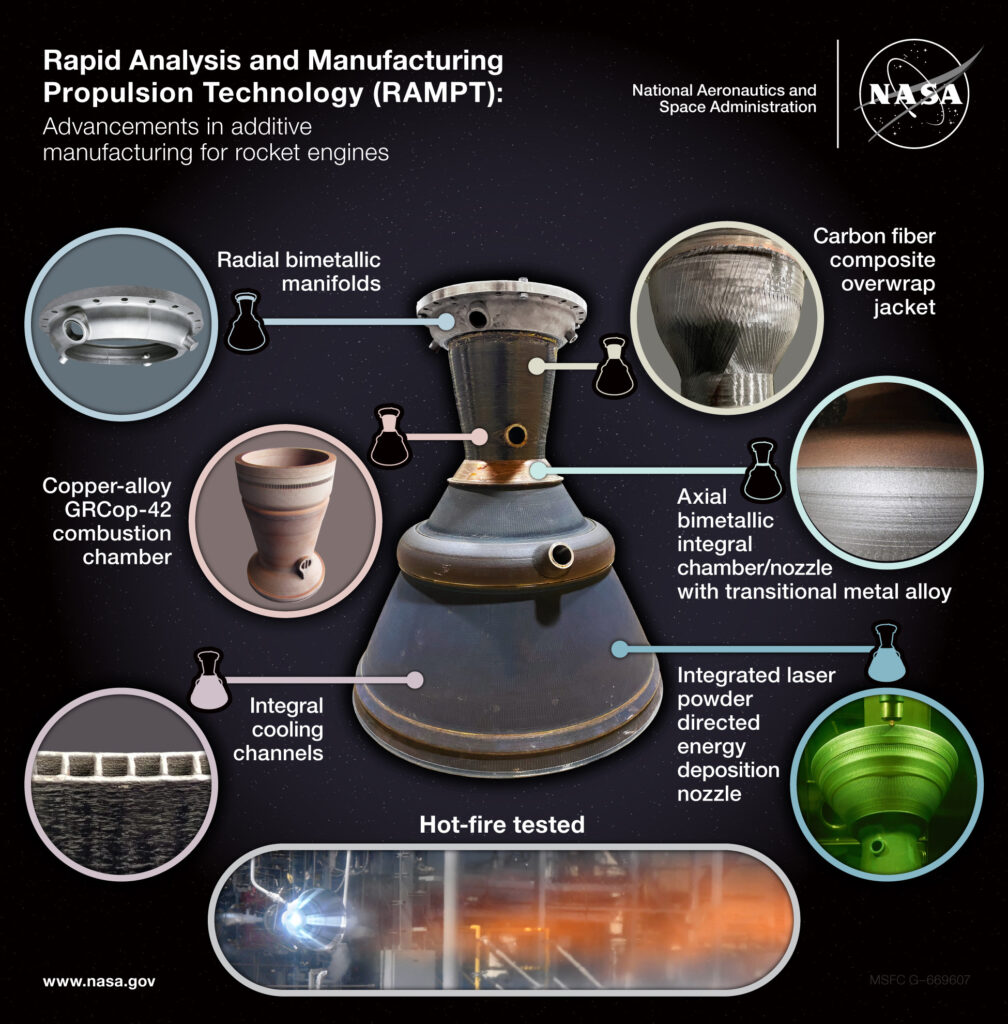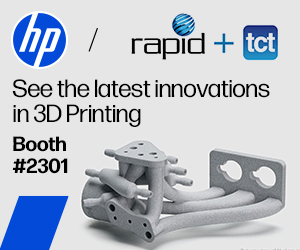NASA’s RAMPT Project is a Stellar Example of 3D Printing Industry Public-Private Partnerships
Amid the mounting pessimism in the additive manufacturing (AM) industry over the last few years, one of the rare bright spots has been the space industry. In this context, while the preponderance of attention tends to go to the private companies in “new space”, government-led initiatives receive their fair share of focus, as well.
Of course, given its history in pure R&D generally, and its deep background in AM, specifically, NASA continues to stand out as a globally significant driver of AM adoption. A recent article published on NASA’s website sheds light on one of the key programs involved in the last decade of NASA’s AM progress, the Rapid Analysis Manufacturing Propulsion Technology (RAMPT) project.
Began in 2017 at Huntsville, Alabama’s Marshall Space Flight Center, RAMPT involves a plethora of different research projects that include a range of private industry and academic partners, and its work has even led to the publication of a textbook on metal AM. The RAMPT team just won NASA’s 2024 Invention of the Year award for the development of a thrust chamber assembly (TCA) produced with both powder bed fusion (PBF) and directed energy deposition (DED), and printed in two different NASA-developed alloys: copper-chromium-niobium (GRCop-42) and NASA HR-1.
As impressive as the demonstration of technical progress is, though, the inter-institutional collaboration on display is equally striking: as the article’s author, Beth Ridgeway, notes, “…[GrCop-42] helped commercial launch provider, Relativity Space, launch the first fully 3D printed rocket in March 2023.” Moreover, the latest, more simplified design for SpaceX’s Raptor engine seems like it may have also benefitted from RAMPT’s work.
In that vein, it is worth mentioning that Velo3D announced it had qualified GrCop-42 for its Sapphire printers back in 2022, and SpaceX is, of course, said to be one of Velo3D’s early investors.
The project manager for RAMPT, John Fikes, told Ridgeway, “The RAMPT project’s goal is to support commercial, technical readiness, enabling our industry partners to meet the challenges inherent in building new generations of safer, more cost-effective deep space exploration propulsion systems. Ten years from now, we may be building rocket engines — or rockets themselves — out of entirely new materials, employing all-new processing and fabrication techniques. NASA is central to all of that.”
The co-principal investigator for RAMPT, Paul Gradl, said, “NASA, through public-private partnerships, is making these breakthroughs accessible to the commercial space industry to help them rapidly advance new flight technologies of their own. We’re solving technical challenges, creating new supply chains for parts and materials, and increasing the industry’s capacity to rapidly deliver reliable hardware that draws a busy commercial space infrastructure ever closer.”
In addition to NASA’s private industry partners, the space agency has also worked with several other academic institutions, like AM specialist Auburn University.
Along these lines, NASA’s RAMPT project is a perfect model for all the AM-centric consortia work that has gotten off the ground in the 2020s. This includes, for instance, the South Kansas Coalition project, “Driving Adoption: Smart Manufacturing Technologies”, which aims to bolster the US domestic aerospace supply chain with AM and other advanced manufacturing technologies.
Ideally, the money from the Build Back Better Regional Challenge, which funded the South Kansas Coalition, will lead to every region across the US having its own AM specialty for a particular strategic sector, and a corresponding public-private consortium that small and medium enterprises (SMEs) in the region can tap into for know-how, workers, etc. If that’s what US reshoring efforts are leading up to, then the new space industry — and its relationship to NASA — should be quite instructive concerning what how all the US’s new manufacturing capacity over the next decade will evolve.
Subscribe to Our Email Newsletter
Stay up-to-date on all the latest news from the 3D printing industry and receive information and offers from third party vendors.
Print Services
You May Also Like
Low-cost “Suzy” Polymer Powder 3D Printer is Faster and Cheaper than Past Models
Polish laser powder bed fusion (LPBF) firm Sinterit has released a follow-up to its predecessors, Lisa and Nils, called Suzy, a $19,490 printer equipped with a 30W fiber diode laser....
India’s $58M Space Fund Is a Boon for AM Innovation
India’s space industry is picking up serious momentum. With a projected $44 billion space economy by 2033, the country is aggressively expanding its capabilities, fostering private-sector participation, and reducing its...
Japanese Advanced Manufacturing Capabilities Grow in Europe with Sodick’s Purchase of Prima Additive
The global economy is currently undergoing a reshuffling in terms of what gets manufactured where. In large part, this trend is being driven by new geopolitical alliances and the need...
Bosch Invests €6M into Serial Auto Part 3D Printing
German industrial conglomerate Robert Bosch GmbH, the world’s largest supplier of automotive parts, has announced a new investment into Nuremberg, Germany additive manufacturing (AM) facility. The nearly €6 million in...





























